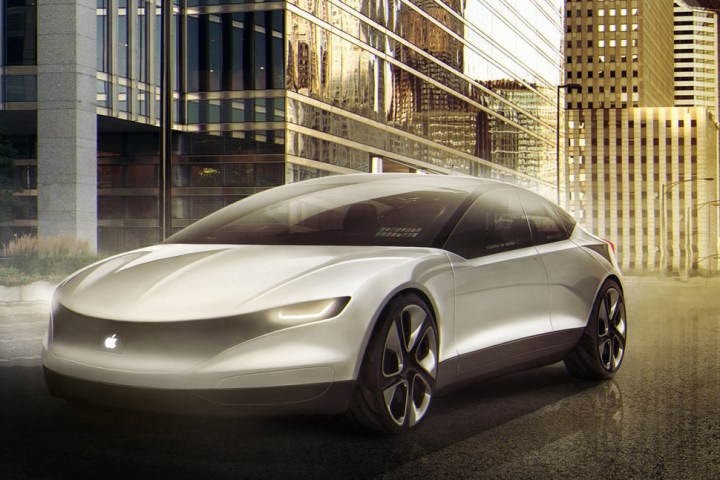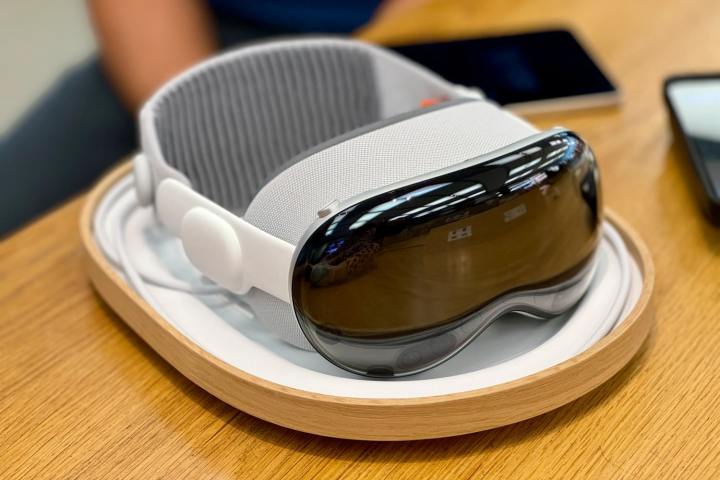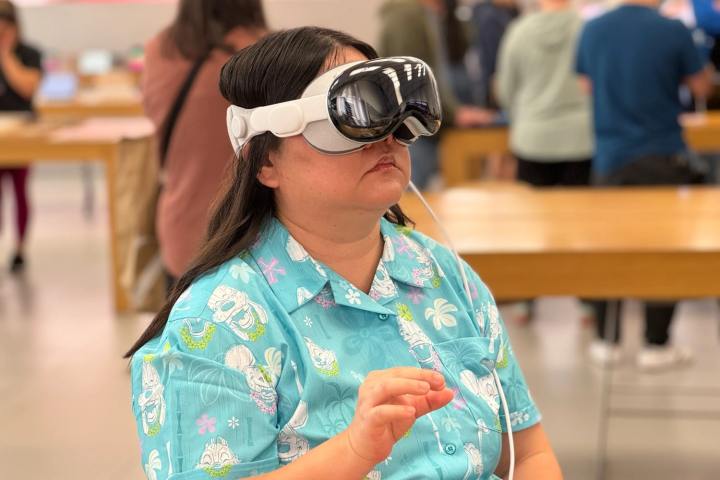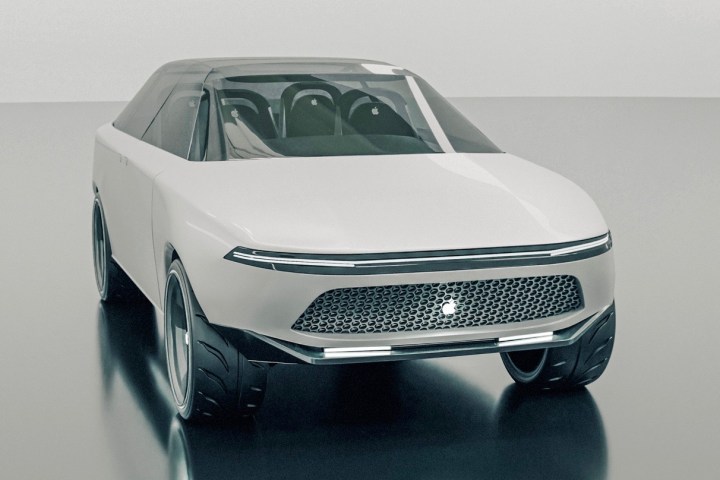Why the Vision Pro succeeded where the Apple Car failed
Everywhere you look, the failure of Apple’s secret self-driving car is dominating the news. Yet, it comes shortly after another moonshot project — the Vision Pro — launched to higher-than-expected initial sales. Why did one crash and burn while the other was successfully brought to market?
Well, Bloomberg reporter Mark Gurman has attempted to answer that question in his latest Power On newsletter, which claims that the Apple Car (known internally as Project Titan) was “doomed nearly from the start.” In the end, there are many reasons for its failure that the Vision Pro was able to navigate its way around.
For one thing, Gurman cites “someone involved in the [Apple Car] decision-making” as likening Apple’s process for its vehicle as trying to skip ahead to the iPhone X instead of aiming for something more modest in its initial versions. This presented huge challenges to Apple that even it couldn’t overcome.

Get your weekly teardown of the tech behind PC gaming
But couldn’t you say the same thing for the Vision Pro? This is a hugely high-end product that easily outdoes rival virtual reality (VR) headsets, and Apple has done it on the first attempt. The desire to be the best (rather than the first) is in Apple’s blood and is reflected in almost all its other products, in fact. That tells me there are other factors at work, and other reasons why the Vision Pro got out of the gates while the Apple Car stalled out.
Jumbled and unfocused

Take a look back at Apple Car leaks and rumors over the years and one thing becomes immediately obvious: Apple kept changing its mind. Every year or so ,we’d read a new report that claimed Apple had switched tracks and decided to adjust the project’s focus.
It was going to be a fully autonomous self-driving car, or it was going to be a fairly standard electric vehicle that would compete with Tesla, or it would be something else entirely. All of these possibilities came to the fore and hinted that all was not well at Apple.
I don’t expect it’s particularly unusual for futuristic concepts to undergo various iterations over their lifetime, and I’m sure Apple experimented with different ideas during the Vision Pro’s development cycle as well.
But with the Apple Car, these ideas weren’t just tweaks and adjustments — they were fundamental changes to the very nature of the product, and apparently, they happened all too frequently. That’s never going to result in a coherent and concise idea of the type that’s required for a successful product.
I know it’s a cliché to say it, but this is the kind of project that was crying out for the kind of leadership practiced by the late Steve Jobs, who was famous for his ruthlessness, but also his intense focus on what makes a product great. It’s hard to imagine him tolerating something as jumbled and ill-defined as the Apple Car.
Not the Apple way

The lack of a coherent strategy is not the only thing that separates the Apple Car from the Vision Pro. There’s another issue that cuts to the core of how Apple does business.
Most vehicles have razor-thin profit margins, making this industry an expensive business to get into. Apple, on the other hand, enjoys sizable markups on its products, something it can afford to do thanks to the luxury perception of its brand. That just doesn’t really work with cars.
Now, you might say that the Vision Pro is the exception here. We’ve seen reports that Apple is barely expected to make any profit on each Vision Pro sold due to the incredibly high manufacturing costs involved, as well as the research and development (R&D), software creation, and labor and marketing outlays that went into it.
But the difference here is that the Vision Pro’s profit margins are likely to improve over time as Apple brings down the component costs and doesn’t have to make up its R&D expenses quite so drastically. Cars, on the other hand, are inherently low-margin products, and that is unlikely to change any time soon.
That makes the automotive industry an unattractive one to Apple, so it’s not surprising to see it get out of vehicle manufacturing before it ever really got started. It really makes me wonder why on Earth was Apple interested in a project like this in the first place.
A market ripe for the taking

Apple might have been willing to tolerate all these setbacks if electric vehicles (EVs) were still as hot a market as they were a decade ago. Now, though, the EV market has cooled down, and that probably made Apple less willing to tolerate its car project’s obvious shortcomings.
Perhaps the reason Apple stuck with its car project for so long was because it believed in it the same way it believed in the Vision Pro and hoped it would eventually pan out. In the end, its endless vacillating and the realities of the automotive industry put paid an end to that dream. There’s no guarantee the Vision Pro will be a long-term success, but it certainly stands a much better chance than the Apple Car ever did.
Editors’ Recommendations

Everywhere you look, the failure of Apple’s secret self-driving car is dominating the news. Yet, it comes shortly after another moonshot project — the Vision Pro — launched to higher-than-expected initial sales. Why did one crash and burn while the other was successfully brought to market?
Well, Bloomberg reporter Mark Gurman has attempted to answer that question in his latest Power On newsletter, which claims that the Apple Car (known internally as Project Titan) was “doomed nearly from the start.” In the end, there are many reasons for its failure that the Vision Pro was able to navigate its way around.
For one thing, Gurman cites “someone involved in the [Apple Car] decision-making” as likening Apple’s process for its vehicle as trying to skip ahead to the iPhone X instead of aiming for something more modest in its initial versions. This presented huge challenges to Apple that even it couldn’t overcome.

Get your weekly teardown of the tech behind PC gaming
But couldn’t you say the same thing for the Vision Pro? This is a hugely high-end product that easily outdoes rival virtual reality (VR) headsets, and Apple has done it on the first attempt. The desire to be the best (rather than the first) is in Apple’s blood and is reflected in almost all its other products, in fact. That tells me there are other factors at work, and other reasons why the Vision Pro got out of the gates while the Apple Car stalled out.
Jumbled and unfocused

Take a look back at Apple Car leaks and rumors over the years and one thing becomes immediately obvious: Apple kept changing its mind. Every year or so ,we’d read a new report that claimed Apple had switched tracks and decided to adjust the project’s focus.
It was going to be a fully autonomous self-driving car, or it was going to be a fairly standard electric vehicle that would compete with Tesla, or it would be something else entirely. All of these possibilities came to the fore and hinted that all was not well at Apple.
I don’t expect it’s particularly unusual for futuristic concepts to undergo various iterations over their lifetime, and I’m sure Apple experimented with different ideas during the Vision Pro’s development cycle as well.
But with the Apple Car, these ideas weren’t just tweaks and adjustments — they were fundamental changes to the very nature of the product, and apparently, they happened all too frequently. That’s never going to result in a coherent and concise idea of the type that’s required for a successful product.
I know it’s a cliché to say it, but this is the kind of project that was crying out for the kind of leadership practiced by the late Steve Jobs, who was famous for his ruthlessness, but also his intense focus on what makes a product great. It’s hard to imagine him tolerating something as jumbled and ill-defined as the Apple Car.
Not the Apple way

The lack of a coherent strategy is not the only thing that separates the Apple Car from the Vision Pro. There’s another issue that cuts to the core of how Apple does business.
Most vehicles have razor-thin profit margins, making this industry an expensive business to get into. Apple, on the other hand, enjoys sizable markups on its products, something it can afford to do thanks to the luxury perception of its brand. That just doesn’t really work with cars.
Now, you might say that the Vision Pro is the exception here. We’ve seen reports that Apple is barely expected to make any profit on each Vision Pro sold due to the incredibly high manufacturing costs involved, as well as the research and development (R&D), software creation, and labor and marketing outlays that went into it.
But the difference here is that the Vision Pro’s profit margins are likely to improve over time as Apple brings down the component costs and doesn’t have to make up its R&D expenses quite so drastically. Cars, on the other hand, are inherently low-margin products, and that is unlikely to change any time soon.
That makes the automotive industry an unattractive one to Apple, so it’s not surprising to see it get out of vehicle manufacturing before it ever really got started. It really makes me wonder why on Earth was Apple interested in a project like this in the first place.
A market ripe for the taking

Apple might have been willing to tolerate all these setbacks if electric vehicles (EVs) were still as hot a market as they were a decade ago. Now, though, the EV market has cooled down, and that probably made Apple less willing to tolerate its car project’s obvious shortcomings.
Perhaps the reason Apple stuck with its car project for so long was because it believed in it the same way it believed in the Vision Pro and hoped it would eventually pan out. In the end, its endless vacillating and the realities of the automotive industry put paid an end to that dream. There’s no guarantee the Vision Pro will be a long-term success, but it certainly stands a much better chance than the Apple Car ever did.
Editors’ Recommendations
